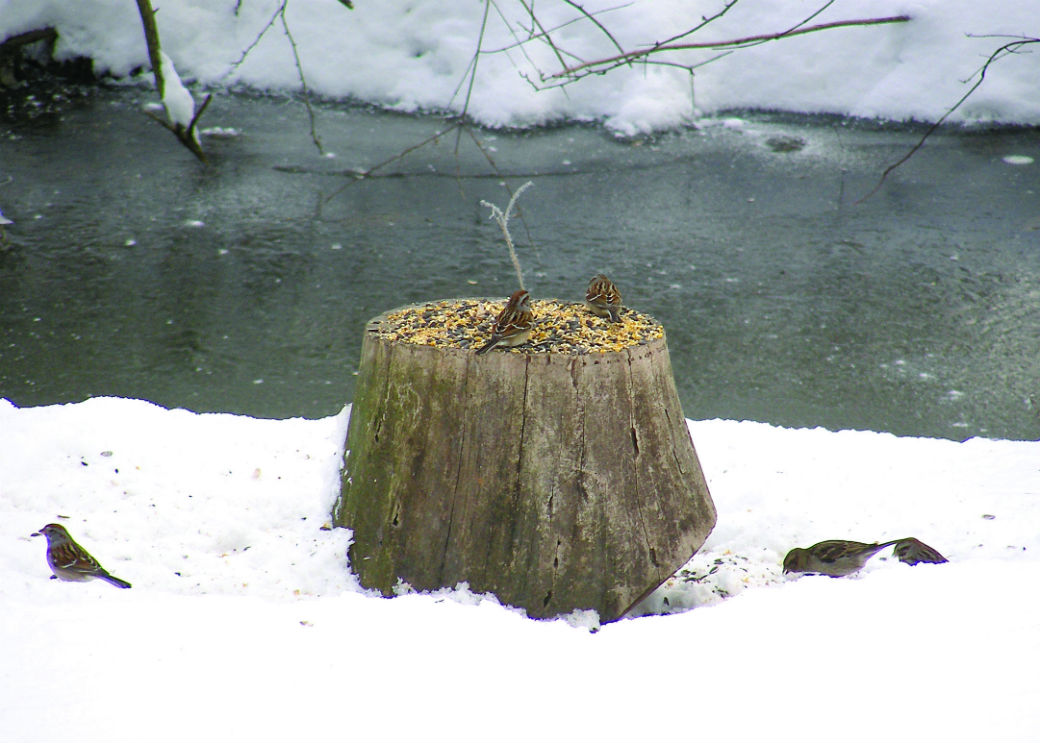Birds in winter - Ever wonder how these creatures survive?

By Nancy D. BRUNDAGE
Ohio certified volunteer naturalist
In the winter, we wear hats, gloves and boots. Birds don’t. So how do they stay warm?
Here are some ways birds have adapted to cold weather.
HEADING SOUTH are the birds that mostly eat insects. They take flight and many go as far as South America.
SPECIAL FEET allow some to stay here. They have thick scaly skin and no soft muscles, only tough tendons. Arteries are near the veins so colder blood is returned quickly and feet stay warm. Birds can also stand on one leg and pull the other up into their down coat.
FEATHERS on some birds are down underneath and water repellant on top. Down can trap air, keeping heat at about 70 degrees. Birds can tuck their face and beak under their shoulder wing. Small birds can puff up like little balls. Large birds (such as geese) grow an extra set of down and insulation.
SHIVERING is done by activating opposite muscles, creating muscle contractions, keeping some birds warm. This is called thermogenesis and generates heat. Blood must be kept warm near vital organs while extremities cool.
HUDDLING together in boxes or sheltered areas can help with warmth for some birds. If in a box, it should be a roosting box with an entrance hole on the bottom and perching spots on the sides to avoid suffocation. Birds also sit in the sun if there’s no wind.
DEEP SLEEP called torpor is another way birds survive winter nights. This is to conserve energy. Chickadees and some others can reduce body temperature by as much as 22 degrees from daytime levels. This is called regulated hypothermia.
METABOLISM in birds is high. In chickadees, this requires doubling body fat each morning, then it is burned off each night. Many birds need to maintain a body temperature of 106 degrees. Birds also do not do energetic activities when it is cold.
FOOD (mainly high energy, like black oil and suet) are helpful. Many birds store food during the fall in cavities. One of the most interesting facts I found was that chickadees increase their brain size by adding neurons to remember where they stored seeds.
NEEDED FROM US is food, water and shelter for many winter birds. Best foods are black oil and safflower seeds. Suet provides fat for many birds, including woodpeckers. Ornamental grasses can provide seeds for food. Fruit-bearing bushes also provide food. Water is also needed. There are heaters available so the water will not freeze. There are also bird baths with built in heaters. Birds can eat snow but water is appreciated. For shelter, evergreen trees and shrubs higher than expected snow provide cover. Brush piles also help.
Birds may look like fragile creatures, but their ability to survive is amazing, thanks to the ways they have adapted. Watching birds and their behavior is a wonderful pastime and feeding them helps them survive and can give you hours of entertainment. To learn more about the birds in your backyard, go to: www.audubon.org
 43
43
